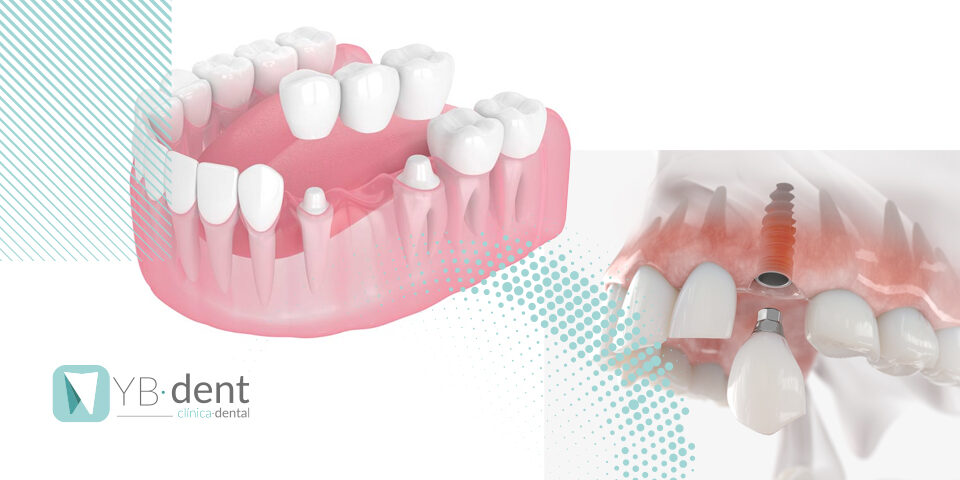Diferencias entre la periodontitis y gingivitis

Es normal que tu boca contenga bacterias. Sin embargo, cuando las bacterias se acumulan, puede aparecer la enfermedad de las encías. Estas enfermedades están causadas por la acumulación de la placa bacteriana que se acumula en las encías.
La fase inicial de la enfermedad de las encías se denomina gingivitis. Consiste en la inflamación de las encías, pero no siempre provoca síntomas. Es posible tener gingivitis sin darse cuenta.
Si no se trata, la gingivitis puede evolucionar hacia la periodontitis. Ésta es la fase más avanzada de la enfermedad de las encías. Puede dañar las encías y provocar la pérdida de dientes con el tiempo.
A continuación, explicaremos los diferentes síntomas y el tratamiento, así como la forma de prevenir la enfermedad de las encías.
¿Qué es la gingivitis?
La gingivitis, o inflamación de las encías, es una enfermedad leve de las encías. Suele causar problemas menores, que pueden aparecer y desaparecer. Si se trata a tiempo, la enfermedad es reversible.
Síntomas de la gingivitis
Los síntomas más comunes de la gingivitis son:
- encías rojas e hinchadas
- encías que sangran al usar el hilo dental o al cepillarse los dientes
- encías que sangran al sin tratar las zonas
Normalmente, la gingivitis no causa dolor.
Tratamiento de la gingivitis
El objetivo del tratamiento es minimizar la inflamación. El tratamiento incluye:
La higiene bucal
Usar hilo dental y cepillarse los dientes con las técnicas correctas es necesario para evitar la gingivitis. Un dentista puede mostrarle cómo cepillarse los dientes y usar el hilo dental correctamente.
Limpieza dental profesional
El dentista eliminará la placa y el sarro de los dientes y las encías.
Enjuague bucal antiséptico
Este enjuague bucal recetado contiene clorhexidina, que reduce las bacterias de la boca.
¿Qué es la periodontitis?
Sin tratamiento, la gingivitis puede progresar a periodontitis, o enfermedad grave de las encías. La periodontitis es la inflamación del periodonto, que es el tejido de las encías y el hueso que mantiene los dientes en su sitio. A medida que la enfermedad progresa, puede provocar el aflojamiento de los dientes.
Síntomas de la periodontitis
La periodontitis se produce por etapas. Cuanto más avanzada sea la etapa, más graves serán los síntomas.
Los síntomas de la periodontitis incluyen:
– Encías rojas e hinchadas
– Sangrado de las encías
– Dientes sensibles
– Encías doloridas
– Dientes flojos
– Dientes que cambian de posición
– Dolor al masticar
Cuando las encías se separan de un diente, se forman espacios que pueden infectarse.
Tratamiento de la periodontitis
Dado que la periodontitis es una fase avanzada de la enfermedad de las encías, requiere un tratamiento adicional. De nuevo, el objetivo es reducir la inflamación.
El tratamiento incluye:
Higiene bucal
Mantener la higiene bucal puede retrasar la periodontitis y prevenir la pérdida de dientes.
Limpieza dental profesional
Un dentista realizará una limpieza profunda. Eliminará el sarro y la placa de los dientes y por debajo de la línea de las encías, lo que puede ayudar a que las encías se vuelvan a unir a los dientes.
Antibióticos
En casos graves, el dentista puede recetar antibióticos orales.
Cirugía abierta
Durante este procedimiento, el dentista abre las encías inflamadas y limpia la raíz del diente. A continuación, sutura el tejido de la encía para que pueda volver a unirse a los dientes.
¿Cómo evoluciona la gingivitis hacia la periodontitis?
Si la gingivitis no se trata, la placa puede acumularse y extenderse a la línea de las encías. Las bacterias de la placa liberan toxinas que irritan e inflaman las encías.
Esto desencadena en una inflamación crónica que daña el tejido de las encías y el hueso que mantiene los dientes en su sitio. El resultado es la periodontitis.
A medida que las encías se rompen, se separan de los dientes, creando bolsas en las encías. Estos huecos pueden infectarse con bacterias en la boca, causando aún más daño al tejido.
El daño tisular también puede hacer que las bolsas de las encías sean más profundas. Si las bolsas son demasiado grandes, los dientes pueden aflojarse debido a la pérdida de hueso. Las bolsas más profundas también pueden significar que es más difícil llegar a las bacterias cuando te cepillas y usas el hilo dental.



